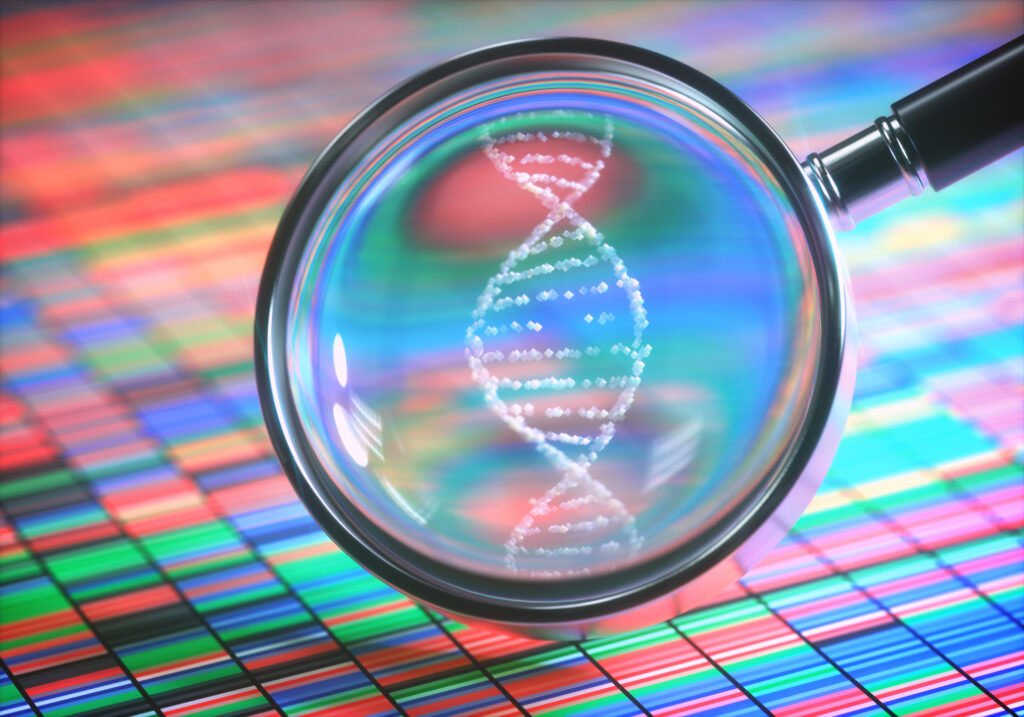
Whole genome sequencing and related ‘omics’ technologies have paved the way for many new possibilities within basic and clinical research, and they are becoming an integral part of the personalised medicine era by identifying individual genotypes that can direct diagnosis and therapy.
Besides a sequencing instrument, reagents and personnel who can translate the sequencing reads into workable data, the only, albeit, most important prerequisite is a sufficient amount of high-quality genomic DNA.
In theory, any sample type that contains intact nuclei should be able to yield the genomic DNA necessary to perform whole genome sequencing. However, in practice the workflow can present some challenges with DNA yield especially when the sample input size is small or the DNA concentration is low, e.g., environmental samples such as soil and water, certain biological fluids, hair, fingernails, formalin-fixed paraffin-embedded (FFPE) tissues, and cells destined for single cell genome sequencing, to name a few.
In this post, we provide a few practical tips on how to approach low input samples to maximum genomic DNA yield.
Proper Sample Collection is Key
Before you even begin to isolate DNA from your precious samples, you should ensure that you are collecting, handling, and storing your sample in the most optimal way.
Any sample type that is destined for DNA isolation will be susceptible to degradation by DNAses that are present in the environment as well as the lab, environmental factors (e.g., temperature, freeze-thaw cycles) and biological factors (e.g., the presence of competing organisms within the sample). All of these factors affect not only the overall yield, but they may also skew experimental data especially for quantitative applications such as transcriptome profiling or metagenomics.
You can mitigate the aforementioned risks through sample preservation at the time of sample collection, in combination with careful handling, e.g., gloves, clean working area and nuclease-free reagents and consumables when possible.
DNA/RNA Shield™ from Zymo Research is an all-in-one reagent for the collection and preservation of any sample type, ensuring worry-free DNA and RNA stabilisation at ambient, fridge or freezer temperatures. DNA/RNA Shield™ inactivates nucleases, microorganisms and viruses, leaving you with an accurate and unbiased molecular snapshot of your samples by preserving the genetic integrity and expression profile of your sample at the time of collection.
You can read more about DNA/RNA Shield™ in a previous blog post.
Effective Sample Lysis
For tough-to-lyse samples such as plant material, fungi, insects, certain tissue or organ types and environmental samples, it is usually necessary to include an extra mechanical, chemical or enzymatic lysis step upstream of the DNA isolation protocol.
Within microbiomics and other applications that sequence multiple genomes simultaneously, mechanical homogenisation in the presence of inert beads is often used to maximise DNA yield and the likelihood that all organisms within the sample are lysed equally to avoid overrepresentation of the easy-to-lyse organisms during sequencing.
How your lyse your samples can impact DNA integrity and yield, so if you experience problems with DNA shearing and low/no yield you may want to take a systematic look at how your procedure affects your DNA yield and data outcome. There is no one-size-fits-all-approach here but good starting points include titrating the amount of chemicals used in chemical lysis, reducing the intensity and/or duration of bead beating in mechanical lysis, and ensuring that your samples don’t become too hot during lysis by cooling them on ice at regular intervals.
In many cases, it is possible to preserve, lyse and homogenise samples in a seamless workflow, even if the solution is not always obvious. Feel free to contact us here at any time and we will gladly help you to find the right setup for your sample type.
Choose the Right Kit/Protocol
There is a wide choice of DNA isolation kits on the market nowadays and we recommend choosing one that has been developed for your specific sample type where possible. For instance, using an FFPE-dedicated kit that was developed using FFPE samples will likely give you greater scope for troubleshooting and superior technical support from your supplier should you experience challenges.
Some vendors have a range of DNA isolation kits that may appear to be the same but watch out for subtle differences such as the required input volume or cell number and choose a kit that is designed to handle low sample amounts. For spin-column kits, those that allow low elution volumes will increases your chances of obtaining a reasonable DNA concentration even if the overall yield is low. If you are concerned about losing DNA during sample processing steps, try to select a kit with simple protocols and fewer processing steps.
Nordic BioSite offers a wide range of DNA isolation kits from Zymo Research and Norgen Biotek, which collectively include kits suitable for all high-purity DNA isolation from all sample types for all applications, including single-cell whole genome sequencing.
By Your Side™ in Life Science Research
We regularly update our portfolio to meet the varied needs of our academic and clinical researchers and we hope you will find solution for your sample type and application. If not, let us know and we will put you in touch with a local team member who will assist you in your search.
Related Blog Posts:
Sample Collection and Preservation – Critical Starting Points in Your Research!
Microorganisms, Microbiomes & Microbiomics
DNA/RNA Shield™ for Next-Generation DNA & RNA Sample Preservation